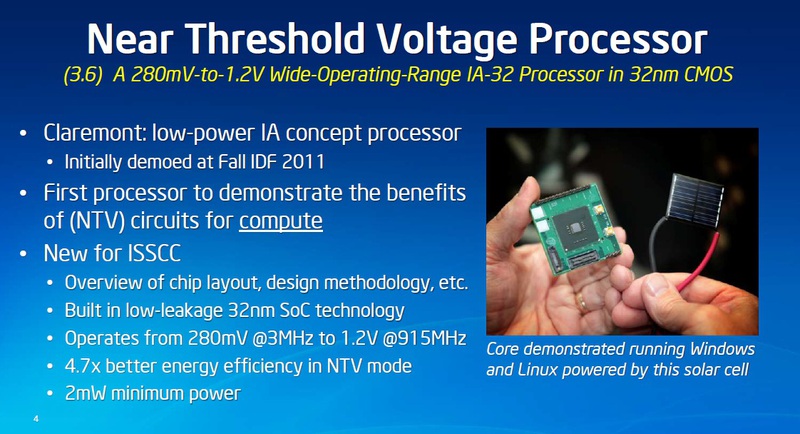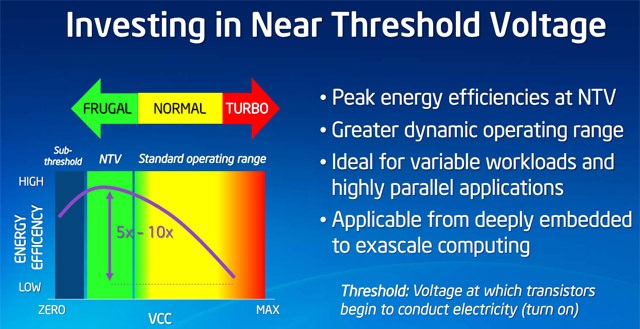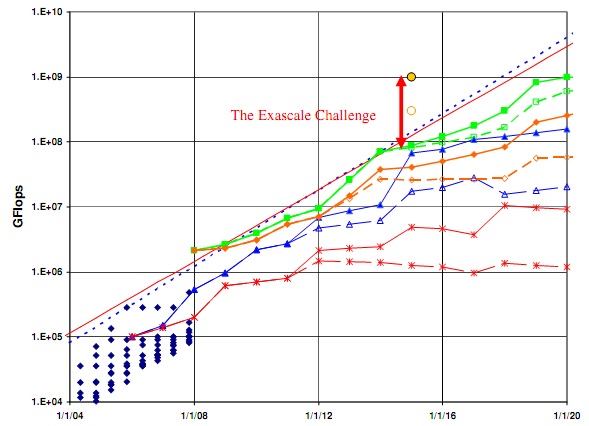The future of productivity growth: what awaits us in the next few years

Earlier it was said about what problems the further decrease in the technical process faced, that productivity growth slowed down, and neither multicore nor manycore solutions are a long-term salvation from the problems that arose. But the semiconductor industry does not stand still, but is trying to solve these problems both in the short term (~ 5 years) and in the long term. This time the story will be about the immediate plans.
The short-term development plans of the ITRS (International Technology Roadmap for Semiconductors) focus on an approach called the More-than-Moore. Its purpose is to apply the same principles to analog circuits that for decades have made it possible to reduce the size of digital devices. And then integrate analog devices as part of SoC (System on Chip) or SiP (System in Package). This is done in order to increase energy efficiency and the capabilities of the system as a whole, increase the complexity of devices (and therefore, answer the question of where to put available transistors :)) and outline development plans for technologies related to this process. Heterogeneous integration is expected to be a major development factor in many areas, from data transfer to entertainment.

Instead of focusing on the CPU alone, as a component that enhances the capabilities of the system and gives it new areas of application, More-than-Moore emphasizes the importance of integration and efficiency of each component. If More-Moore (the traditional approach to creating a more powerful processor, using the achievements of the process technology) refers to the ability to perform calculations, then More-than-Moore is associated with the possibilities of interacting with the environment and users.

The original More-than-Moore approach says nothing about converting analog circuits to digital. But Intel's 2012 ISSCC articledemonstrates otherwise: Existing wireless modules for mobile devices digitally transmit data, but use many analog components. Analog transistors are more difficult to miniaturize, and therefore it makes sense to create a purely digital radio transmitter. It is also argued that it is possible to effectively protect the CPU and radio from the mutual influence that previously hindered the integration of these devices.

An NTV processor that runs Windows and Linux on a small solar panel.
One of the most remarkable trends in modern semiconductor research is how the search for energy-efficient solutions has completely replaced the race for clock speed. Now, success is measured in how long the device has been in a state of minimal power consumption and how quickly it goes from it to operating mode.

Intel Research in Digital Radio and NTV (Near Threshold Voltage) Electronics, 3D Integrationetc. - examples of how the focus of development has shifted. However, this applies not only to mobile devices. The supercomputer K (actually “Kei” - 京 - “10 quadrillion” in Japanese), created by Fujitsu and Riken, was also designed with energy efficiency in mind as one of the main factors. In particular, the supply voltage of each individual processor is selected according to current requirements, which saves 1MW of power and ~ $ 1mn per year.
Again, perhaps this approach of Fujitsu will never be directly applied to PCs or mobile devices, but it shows how manufacturers are sometimes looking for the most exotic ways to reduce power consumption.

Such developments and initiatives are partially visible now and will dominate the next few years. According to the forecasts of the DARPA Exascale Challenge, the performance of supercomputers by 2015 should have overcome the mark of 1 exaflop with power consumption of up to 20MW. But instead, for a number of reasons, development has slowed. And current performance indicators are 3 orders of magnitude behind.
About long-term plans related to productivity growth, mainly related to the search for alternatives to silicon, next time.
